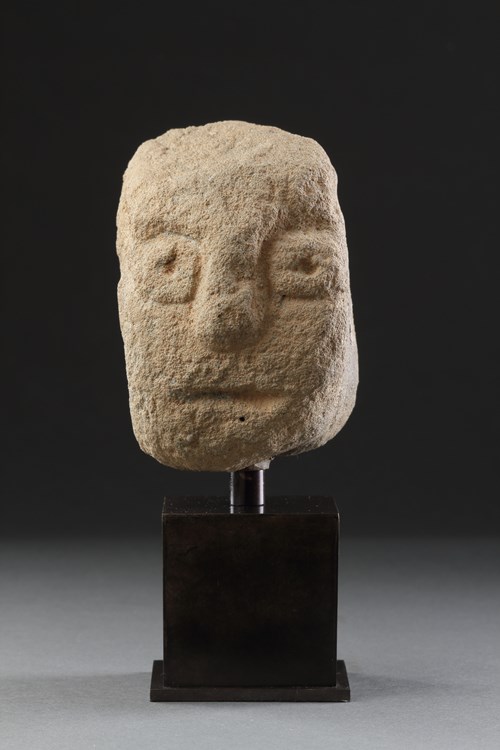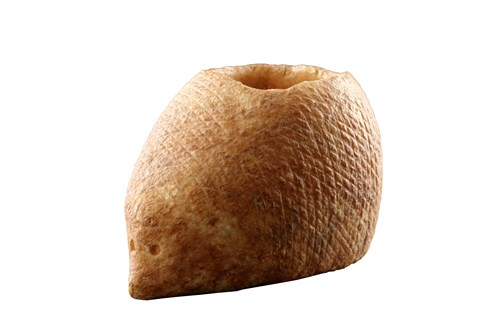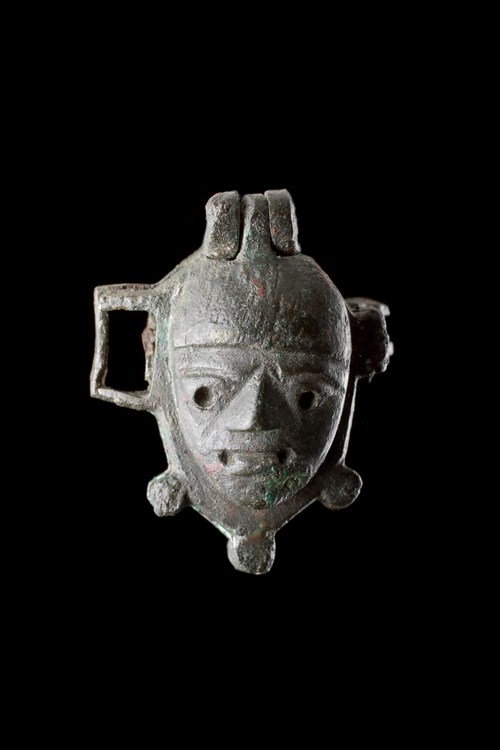Carved Limestone Celtic Votive Head of a Male Warrior from a Shrine
A Carved Limestone Celtic Votive Head of a Male Warrior from a Shrine
The head part of a larger triangular shaped stone
Northern England
Circa 1st Century B.C - 1st Century A.D
Size: 43.5cm high, 36.5cm wide, 20cm deep - 17 ins high, 14½ ins wide, 7¾ ins deep / 47cm high - 18½ ins high (with base)
The head part of a larger triangular shaped stone
Northern England
Circa 1st Century B.C - 1st Century A.D
Size: 43.5cm high, 36.5cm wide, 20cm deep - 17 ins high, 14½ ins wide, 7¾ ins deep / 47cm high - 18½ ins high (with base)
A Carved Limestone Celtic Votive Head of a Male Warrior from a Shrine
The head part of a larger triangular shaped stone
Northern England
Circa 1st Century B.C - 1st Century A.D
Size: 43.5cm high, 36.5cm wide, 20cm deep - 17 ins high, 14½ ins wide, 7¾ ins deep / 47cm high - 18½ ins high (with base)
The head part of a larger triangular shaped stone
Northern England
Circa 1st Century B.C - 1st Century A.D
Size: 43.5cm high, 36.5cm wide, 20cm deep - 17 ins high, 14½ ins wide, 7¾ ins deep / 47cm high - 18½ ins high (with base)
From about 500 B.C, first Greek and later Roman historians mention peoples living in a large area of non-mediterranean Europe as Celts. These classical chroniclers seem to have recognised these communities as having sufficient shared cultural traditions to justify their being given a common name, ‘Keltoi’ by the Greeks, and ‘Celtae’ or ‘Galli’ by the Romans. The earliest allusions to Celts by such Greek historians as Herodotus (485 - 425 B.C) were followed by Polybius (200 - 118 B.C) and Livy (59 B.C - 17 A.D) who discuss the expansion of the Celts from their central European homelands during the 4th and 3rd centuries B.C. They document the presence of Celts in Spain, France, Italy, Greece and Asia Minor, specifically central Turkey. The Celts testify to the successful Roman resistance to the Celts in Italy, after the ignominy of the sacking of Rome by them in 387 B.C, and describe the huge defeat suffered by the Celts at the battle of Telemon in northern Italy in 225 B.C. The Celts in Greece who sacked the sacred site of Delphi in 279 B.C were defeated by King Antigonos Gonatas of Macedon in 278 - 277 B.C and in Turkey by Altalus of Pergamon in 240 B.C. The Celts in Spain fell under the shadow of Rome from 2nd Century B.C and the Celtic heartland known by the Romans as ‘Gaul’ was conquered by the Romans under Julius Caesar in the mid 1st Century B.C. Britain was not referred to as Celtic by the ancient historians, but Caesar recognised the close similarities between Britain and Gaul especially in their political organisation. Tacitus (55 - 120 A.D) and others chronicled the conquest of Britain between 43 and 84 A.D some mentioning the fierce nature of the Celts who went into battle naked.
Celtic art therefore belongs to an artistic tradition in the early history of Europe which is no less important than that of the classical world. Art was central to Celtic identity and was closely related to the objects which it decorated. The Celts were used to seeing art as an integral part of their everyday lives.
Celtic art therefore belongs to an artistic tradition in the early history of Europe which is no less important than that of the classical world. Art was central to Celtic identity and was closely related to the objects which it decorated. The Celts were used to seeing art as an integral part of their everyday lives.
By repute Woburn Abbey
Ex Private English collection
Ex Private English collection
Carved Limestone Celtic Votive Head of a Male Warrior from a Shrine


















